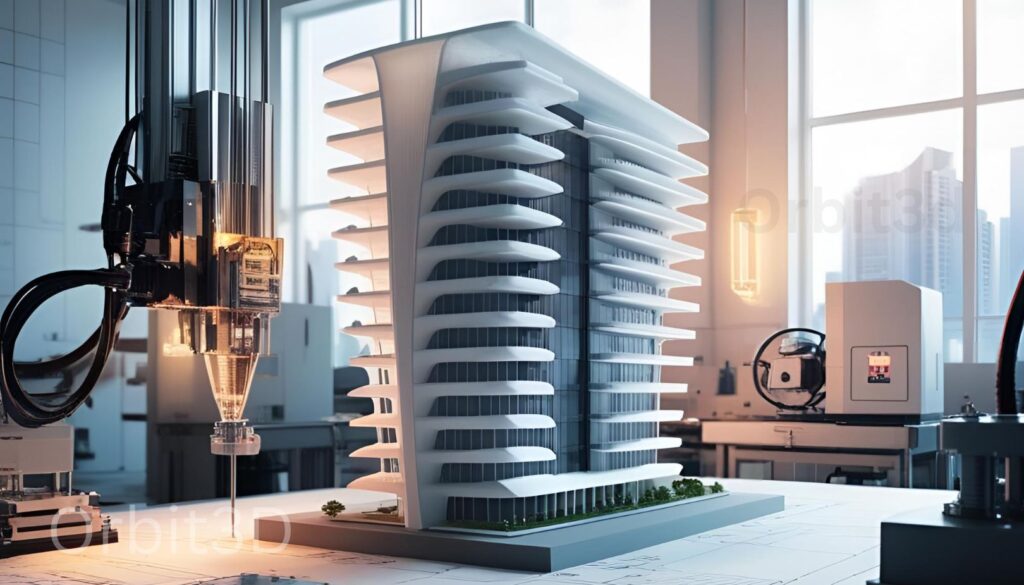Dubai has always been at the forefront of innovation, and 3D printing is revolutionizing its architecture sector. From constructing sustainable buildings to creating intricate designs, this technology is reshaping the future of urban development. In this blog, we will explore the top 10 applications of 3D printing in Dubai’s architecture sector and how it is changing the way structures are built.
1. Construction of 3D-Printed Buildings
Dubai is home to some of the world’s first 3D-printed buildings, including the famous Office of the Future. Using advanced 3D printing technology, entire structures are built in a fraction of the time required by traditional methods. This reduces labor costs, minimizes waste, and ensures precision in architectural designs.
2. Sustainable and Eco-Friendly Architecture
With a focus on sustainability, 3D printing allows Dubai’s architecture sector to reduce material waste and carbon footprints. By using locally sourced materials and recycled components, architects can create eco-friendly buildings that align with Dubai’s vision of a sustainable future.
3. Affordable Housing Projects
Dubai aims to address housing demands through 3D printing. The technology enables the rapid construction of cost-effective homes, making housing more affordable for residents. By cutting down material costs and labor expenses, the city is making significant strides in providing budget-friendly living solutions.
4. Customization and Unique Designs
One of the biggest advantages of 3D printing is the ability to create intricate and customized architectural designs. Dubai’s skyline is known for its unique structures, and with 3D printing, architects can push the boundaries of creativity, designing futuristic buildings with complex geometries that would be impossible with traditional construction methods.
5. Restoration of Heritage Sites
Preserving Dubai’s cultural heritage is a priority, and 3D printing plays a crucial role in restoring historical landmarks. By scanning and printing missing or damaged elements, historical structures can be reconstructed with remarkable accuracy, ensuring their longevity for future generations.
6. Urban Planning and Prototyping
Before large-scale construction begins, architects and engineers use 3D printing to create detailed prototypes of their designs. These models allow city planners to visualize projects, make necessary modifications, and enhance urban landscapes efficiently.
7. 3D-Printed Bridges and Infrastructure
Dubai is exploring the use of 3D printing for bridges and other infrastructural projects. The world’s first 3D-printed pedestrian bridge was successfully installed in other countries, and Dubai is looking to implement similar innovations to enhance connectivity and efficiency in urban transportation.
8. Faster and More Efficient Construction
Traditional construction methods can take years to complete, but 3D printing significantly speeds up the process. Dubai aims to have 25% of its new buildings constructed using 3D printing by 2030, proving the efficiency and reliability of this technology in large-scale projects.
9. Reduced Labor Costs and Workforce Dependency
One of the major challenges in the construction industry is the high dependency on labor. 3D printing reduces the need for a large workforce, minimizing human errors and improving project timelines. This technology will transform Dubai’s architecture sector by automating construction and enhancing precision.
10. Innovative Interior and Exterior Designs
3D printing extends beyond structural elements and plays a key role in creating stunning interior and exterior designs. From intricate wall panels to uniquely designed furniture, this technology allows architects to experiment with innovative aesthetics while maintaining structural integrity.
The Future of 3D Printing in Dubai’s Architecture Sector
Dubai is a global leader in technological advancements, and 3D printing is shaping its future. With the government actively promoting 3D printing initiatives, we can expect more revolutionary projects in the coming years. As the technology continues to evolve, it will further enhance sustainability, affordability, and efficiency in Dubai’s architecture sector.
The integration of 3D printing in Dubai’s architecture sector is not just a trend but a transformative movement. By embracing this cutting-edge technology, Dubai is setting new standards in the construction industry, making the city a hub for innovation and futuristic urban development.


